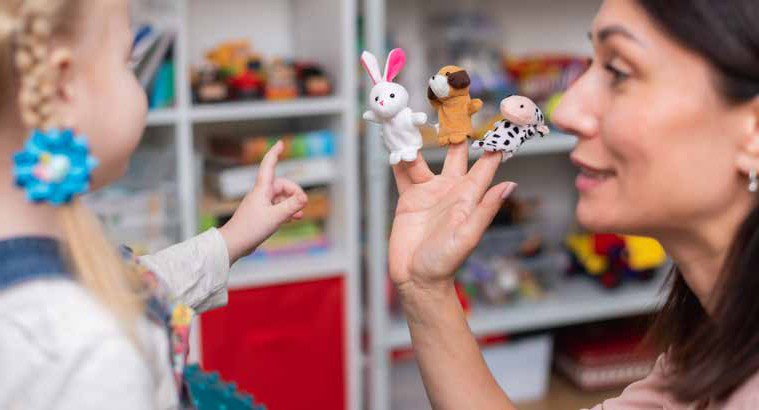FAMILY CORNER
Connecting with words
We share some top tips for supporting your child’s early communication and language development

Share this guidance with your families
Language is so important when it comes to connecting with the world around us, interacting with other people or being able to share our inner thoughts and feelings. Even young babies instinctively try and connect with others by seeking out familiar faces, or communicate with them through gurgles and cries. An adult that responds to these interactions increases their desire to interact again and again. As young children learn so much through their play, it’s not surprising that by playing, they will also develop their language skills. The more that you positively interact and talk to your child, the more confident they will become to communicate with you and with others around them.
Top tips to support your child to communicate confidently
Follow their lead: Children are more likely to learn when they are engaging with something they are interested in. When your child is playing with something they enjoy or showing an interest in something new, take the opportunity to interact with them. Use more comments and less questions!
Allow time: Often as adults, we fill pauses and silences as we think children aren’t listening or haven’t understood us. Next time you are asking your child a question or giving them an instruction to follow, try counting to 10 in your head before saying anything else (it may feel longer than you expect). You may find that it just takes time for them to hear, understand, process and respond.
Offer simple choices: This could be as simple as “Shall we play with the train or the dolly?” Early communication may be reaching for the train or pointing to the dolly, using their non-verbal communication, but this can develop to the use of words and is an easy way to provide opportunities for children to use their language. *Remember the 10-second rule and wait for that response!
Model language: Your child may say a single word, such as “car”, add a new word to this, such as “red car”. This provides them with new information about what they are experiencing to use in the future. Sometimes children mispronounce words as they are learning to talk. Your child may say “wabbit” - in response you could say: “Yes, it’s a rabbit!” This way you are acknowledging their attempt to communicate and allowing them to hear how to say the word correctly.
Use books, songs and rhymes: Just think about all of the new words a child can experience in a book or a song that they may not come across in a conversation, or the ideas a child may come up with from looking at the pictures in a book. Why not join your local library, look in charity shops or ask at your child’s early education setting if they have any books you can borrow?
Use everyday opportunities: Routine things that you do during your day, such as shopping or meal-times, can provide opportunities for interactions and to learn. Try giving your child their own shopping list and encourage them to help find the items – this supports to develop their understanding of words. Do they know the difference between a potato and a carrot?
Don’t forget that communication isn’t always verbal. Tools such as Makaton or British Sign Language (BSL) can support children begin to communicate effectively. For some children, having a visual sign or symbol may support their understanding of language. For children who are non-verbal or preverbal, having a sign can provide a way of communicating their needs/wants. For children with a hearing impairment, the use of BSL allows them to communicate without the need to hear or say words.
Some children can have difficulty learning and using words. Ensure to speak with your early years or health professionals should you have concern that your child is not yet speaking or communicating confidently.
Find out more
For more tips and advice for families, visit familycorner.co.uk.